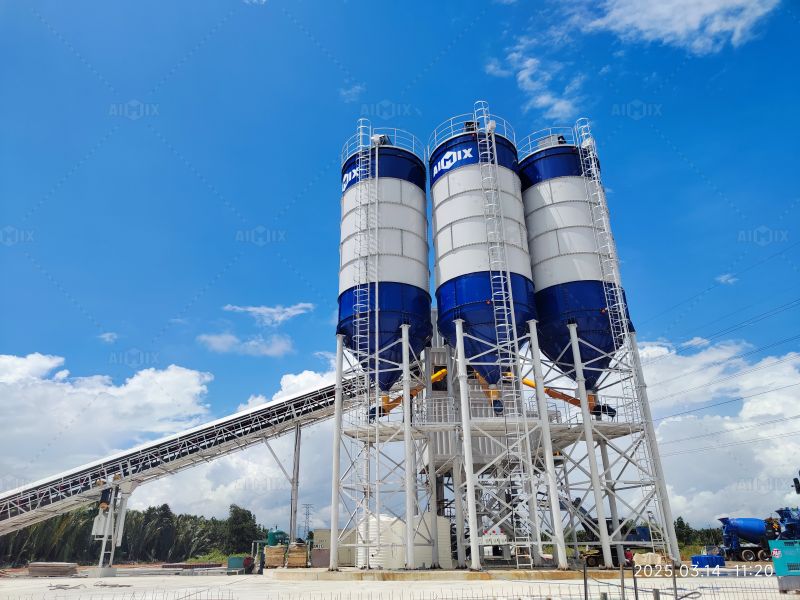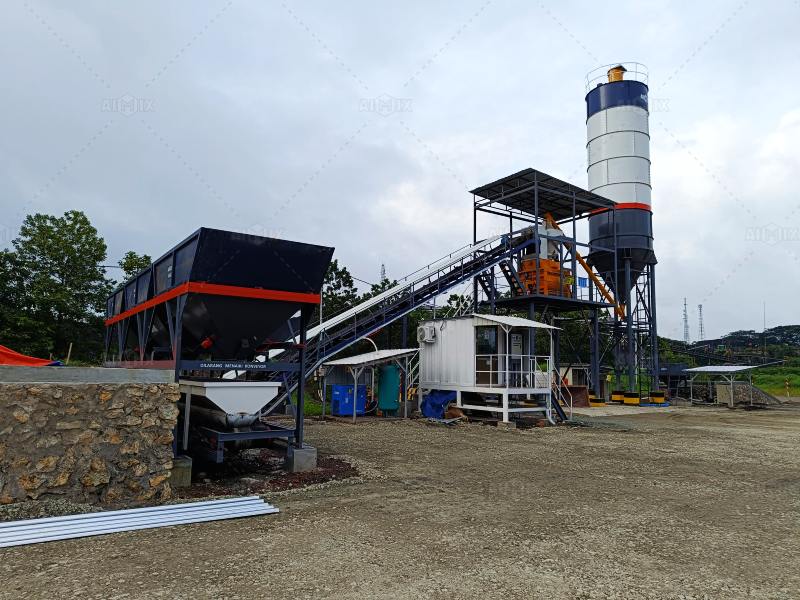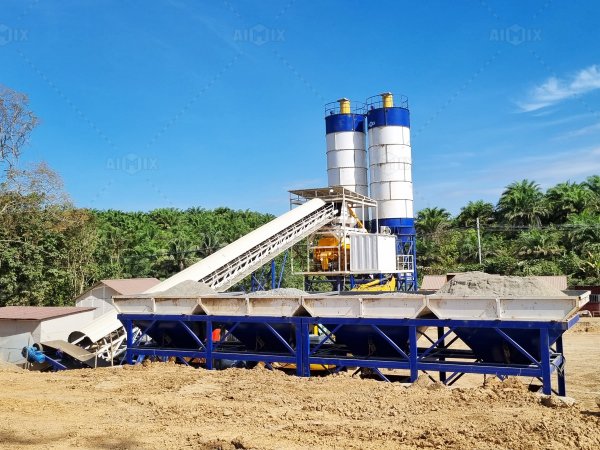As the world intensifies its efforts to combat climate change, the construction industry is under increasing pressure to reduce its environmental footprint. Concrete, the second most consumed substance on Earth after water, plays a pivotal role in this conversation. Central to the production of concrete is the concrete batching plant—a facility that mixes cement, aggregates, water, and additives to produce concrete at scale.
With new demands for sustainability, the industry is now shifting toward environmentally responsible solutions. From ready mix concrete batching plant designs to the adoption of low-emission machinery and smart waste management practices, the journey toward greener concrete production is underway.

The Carbon Footprint of Traditional Batching Plants
Traditional concrete batching operations contribute significantly to greenhouse gas emissions due to high energy consumption, cement use, and inefficient transportation. Cement production alone is responsible for approximately 8% of global CO₂ emissions. Additionally, dust, noise, water runoff, and energy usage from diesel generators and old equipment only exacerbate the environmental toll.
To address this, manufacturers and contractors are exploring ways to decarbonize operations by updating infrastructure, optimizing energy use, and integrating digital systems.
Green Innovations in Ready Mix Concrete Batching Plants
A ready mix concrete batching plant is typically located near construction sites or urban areas, reducing the need for long-haul transportation and ensuring fresh delivery of concrete. New developments in this segment are improving sustainability in several ways:
1. Recycled Water Usage
Modern batching systems now include closed-loop water systems that recycle process water, minimizing the discharge of wastewater into the environment.
2. Eco-Friendly Cement Alternatives
Supplementary cementitious materials (SCMs) like fly ash, slag, and silica fume are being used in ready mix formulations to reduce the reliance on traditional Portland cement.
3. Energy-Efficient Equipment
Electric mixers, solar-powered control rooms, and energy-saving motors are replacing diesel-driven systems to lower carbon emissions.
4. Smart Mixing and Monitoring
Computer-controlled systems ensure the precise mixing of concrete components, which reduces material waste and guarantees consistent quality.
Ready mix concrete batching plants now play a key role in achieving LEED certifications and meeting ESG (Environmental, Social, Governance) criteria for green construction.

Sustainability Upgrades in Stationary Concrete Batching Plants
Stationary concrete batching plant systems are usually set up for large-scale, long-term projects like bridges, highways, and urban developments. These plants, due to their size and capacity, are ideal for implementing comprehensive sustainability measures:
1. Bulk Material Handling Systems
Automated, enclosed conveyor belts and silos reduce dust emissions and improve material efficiency.
2. On-Site Cement Silos with Low Emission Loaders
By reducing transportation and using electric loaders, CO₂ emissions can be significantly cut.
3. Real-Time Emissions Tracking
IoT-enabled monitoring systems help plant operators track emissions, energy usage, and output in real time, ensuring compliance with green building codes.
Stationary plants are also increasingly being built with noise-reducing enclosures and landscape integration to limit environmental and visual pollution.
The Role of Mobile Concrete Plants in Reducing Carbon Footprint
The rise of the mobile concrete plant has added a new layer of sustainability to modern construction. These portable units are ideal for remote or temporary construction projects and provide a flexible alternative to transporting concrete over long distances.
Environmental Benefits of Mobile Plants:
Reduced Transport Emissions: Concrete is produced on-site, eliminating the need for long truck hauls.
Minimal Land Disruption: Mobile plants require less ground preparation and can be dismantled and reused elsewhere.
Fuel Savings: On-site production reduces fuel consumption for delivery vehicles, cutting both costs and carbon output.
Mobile plants also support modular construction approaches that are inherently more efficient and sustainable.

Industry-Wide Shifts Toward Green Certification
Governments and regulatory bodies across the globe are enforcing stricter sustainability requirements for construction. As a result, many concrete batching plant operators are seeking green building certifications such as:
LEED (Leadership in Energy and Environmental Design)
BREEAM (Building Research Establishment Environmental Assessment Method)
Green Star (Australia)
To qualify, batching operations must demonstrate effective resource management, energy efficiency, and reduced emissions—further pushing the industry toward innovation.
Challenges and Opportunities
While the move toward greener concrete batching plant solutions is promising, several challenges remain:
Key Challenges:
Higher Upfront Costs: Energy-efficient equipment and automation systems can be expensive to install.
Technical Training: Operators need training to run advanced control systems and manage sustainable practices.
Regulatory Compliance: Varying environmental standards across countries can complicate operations for multinational firms.
However, the long-term benefits—including reduced operating costs, improved brand reputation, and compliance with global sustainability targets—outweigh the initial investment.
Conclusion
Sustainability in the concrete batching plant industry is no longer a niche trend—it’s a necessity. Whether it’s through eco-conscious ready mix concrete batching plant design, resource-efficient stationary concrete batching plant upgrades, or flexible mobile concrete plant applications, the industry is laying the foundation for a greener, more responsible future.
As the global construction sector continues to evolve, those who invest in sustainable batching solutions today will be best positioned to lead the market tomorrow.
